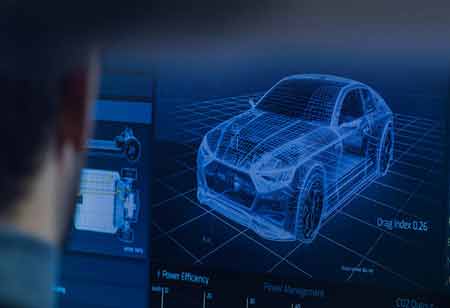THANK YOU FOR SUBSCRIBING
THANK YOU FOR SUBSCRIBING
Be first to read the latest tech news, Industry Leader's Insights, and CIO interviews of medium and large enterprises exclusively from Auto Tech Outlook

By
Auto Tech Outlook | Friday, August 16, 2024
Stay ahead of the industry with exclusive feature stories on the top companies, expert insights and the latest news delivered straight to your inbox. Subscribe today.
Europe is leading the global EV transition, requiring rigorous environmental testing to ensure reliability, safety, and longevity. ECE R100, R118, and R130 standards have been established.
FREMONT CA: The transition to electric vehicles (EVs) is accelerating globally, with Europe leading this transformation. A crucial aspect of ensuring EVs' reliability, safety, and longevity involves comprehensive environmental testing.
The Importance of Environmental Testing for Electric Vehicles
EVs differ significantly from traditional internal combustion engine (ICE) vehicles due to their heavy reliance on battery packs and electronic components, which are highly sensitive to environmental conditions. Environmental testing is essential for ensuring EVs' reliability, performance, and safety. This testing helps identify and mitigate potential risks by exposing vehicles to extreme environmental conditions, thereby uncovering weaknesses and design flaws. It also allows engineers to optimise vehicle systems for performance across different climates and ensures safety for occupants and pedestrians under all conditions. Furthermore, stringent regulatory requirements set by the European Union necessitate comprehensive environmental testing for vehicle homologation.
Key Environmental Factors and Testing
Europe's diverse climate—from the Arctic Circle to the Mediterranean—presents unique challenges for EV manufacturers, necessitating various environmental tests. Temperature extremes are addressed through cold weather testing in Scandinavia, which evaluates battery performance, charging efficiency, and vehicle heating systems in sub-zero conditions. Conversely, hot weather testing in southern Europe focuses on battery thermal management, charging infrastructure, and overall vehicle performance in high temperatures.
Humidity testing, performed in coastal and tropical regions, assesses the impact of moisture on electronic components, corrosion resistance, and battery performance. High-altitude testing in mountainous areas examines how reduced air density affects engine performance, battery efficiency, and vehicle handling. Rain and water testing evaluate protection against water ingress and the efficiency of windshield wipers and other components in wet conditions. Additionally, particle filtration testing ensures that air filters protect the vehicle’s interior and components from harmful particles. In contrast, rough road testing evaluates the durability of the suspension, chassis, and other elements under challenging road conditions.
Advanced Testing Techniques
As EVs become more complex, manufacturers are adopting advanced testing techniques. Simulation using computer-aided engineering (CAE) models various environmental conditions to predict component behaviour. Accelerated life testing subjects components to extreme conditions to simulate years of use in a shorter period. Real-world testing involves collecting vehicle data to validate simulation results and identify practical challenges.
The Role of European Standards
The European Union has established rigorous standards for EV testing to ensure high safety and performance levels. Essential standards include ECE R100, which covers general safety requirements for electric vehicles; ECE R118, which addresses electromagnetic compatibility; and ECE R130, which deals with environmental protection requirements. Adhering to these standards is crucial for maintaining the safety and performance of EVs sold in Europe.
Environmental testing is fundamental to EV development in Europe. By subjecting vehicles to rigorous testing under various conditions, manufacturers can ensure that EVs are reliable, safe, and adaptable to the continent's diverse climate. As the EV market continues to expand, the significance of environmental testing will increase, driving innovation and bolstering consumer confidence.
 Copyright © 2025 AutoTech Outlook. All Rights Reserved | Privacy Policy | Subscribe | Sitemap | About us | Feedback Policy | Editorial Policy
Copyright © 2025 AutoTech Outlook. All Rights Reserved | Privacy Policy | Subscribe | Sitemap | About us | Feedback Policy | Editorial Policy 



